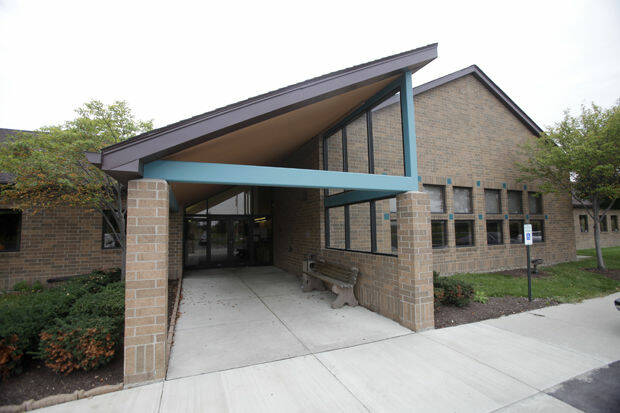
There is no correlation between poverty, unemployment and the suicide rate in Wood County.
“What that tells us is that … suicide is a risk for everybody,” according to Tyler Briggs, an epidemiology program specialist with the Wood County Health Department.
Suicide is the 11th leading cause of death in Wood County and is responsible for an average of 16 deaths each year, he said.
The board of health had asked last month for a summary of suicide ideology in the county.
Briggs presented facts and trends at Thursday’s board meeting.
“Because we’re dealing with people (and) deaths when we’re looking at this, some of these percentages might seem small, but they’re really not,” he warned.
• 12% of adults in the county reported feeling sad or hopeless for two or more weeks. That is 16,000 people
• 3% attempted or contemplated suicide. That is 500 people.
• 10% looked for mental health services and could not find them. That is 13,000 people.
Briggs said they tried to compare everything they thought could be a contributing factor to suicide, including poverty and unemployment, but didn’t find any correlation.
The largest increase in suicide deaths occurs between November and January, he said.
Other findings include:
• Since 2019, men account for 73% of suicide deaths in Wood County and the main method was gunshot.
• Death by firearms was 65%, suffocation was 24% and by overdose was 5% (all women) from 2019-2023.
• Individuals 20-24 years old are the most identified age group for suicide ideation followed closely by those 10-19 years old.
“It’s truly a top need that needs to continue to be addressed,” Briggs said.
Board member Bob Midden said he was struck by the age distribution of suicide ideation.
“I was not aware that so many young people dominate that particular characteristic,” he said.
He asked how that translated to actual suicide deaths.
Suicide deaths are predominantly older individuals – middle aged adults, Briggs said.
“But the suicide ideation in a 19-year-old was significantly high,” he said.
Board member DJ Mears asked if Briggs and Brock Lough, interim chief executive officer at the Wood County Community Health Center, had found any deficiencies in services the board could act on.
“We can’t be taking this lightly,” he said.
Briggs pointed out the board was seeking a psychiatrist for the health center.
He said he and his wife did cold calling to determine the wait time for services, and the average was six months.
One barrier is a lot of health insurance carriers do not cover telehealth, he said.
Midden said he heard screening for suicide ideation in every health care encounter is effective when it comes to intervention.
With mental health services at the health center, it is an opportunity to overcome some of the barriers between recognizing there is a problem and intervention, he said.
“We are screening in all areas of our clinic for suicide ideation,” Lough said. “We are treating the whole person.”
The health center behavioral health no longer requires individuals to become patients in order to receive services.
“This is why I do what I do,” Lough said. “To see this data is shocking and sad.”
Board member Tom Milbrodt said local data makes this issue more impactful and voiced concern over the prevalence of firearms in successful suicides.
“We’ve got to keep talking about this,” Mears said.
Resources
Unison Crisis Stabilization Unit: 419-352-4624
Suicide Prevention Hotline: text 4HOPE to 741741
National Suicide Hotline: 988
Wood County Crisis Line: 419-502-4673 (HOPE)
Children’s Resource Center (18 and younger): 419-352-7588
Veteran’s Crisis Line: 1-800-273-8255 Press 1 or text 838255
The Trevor Project (LGBTQ): text START to 678678
Harbor Connection Center: 419-354-4200

